Division Teaching Resources
Make teaching division simple this school year with printable worksheets, digital activities, games and more to help students understand how to divide and apply division strategies to maths problems.
This teaching resource collection was created by the teachers on the Teach Starter team for primary teachers, and each Australian curriculum-aligned resource has been carefully reviewed and curated to ensure it's ready to use with your students! Explore long division activities, methods for explaining divisors and dividends and more, plus find differentiated resources to help you meet each student's needs!
Want to learn more about division, or looking for fresh ideas? Read on for a primer from our teacher team!
What Is Division? A Kid-Friendly Definition
Introducing division to your class? Let's start with a definition of this math operation that's easy for them to understand!
Division is the maths operation that separates a group of items or values into equal parts. The division symbols used to represent the division operation are the ÷ or / symbols. Students will also learn how to divide with a long division bracket.
An example can help students understand this!
Let's say you have 10 apples, and you want to share them equally between 2 people. To do this, you can divide 10 by 2, creating the following problem:
- 10 ÷ 2 = 5
Using division, you determine that you can give each person 5 apples.
Division Terms
Launching into division in your maths class involves plenty of new vocabulary words for your students to learn! Here are some of the terms you will want to start off with.
Dividend
The number that is being divided in a division problem is called a dividend.
Divisor
The divisor is the number that divides the dividend in a division problem.
Quotient
The answer to a division problem is called the quotient. This number represents the number of equal parts.
Remainder
The remainder in a division problem is the amount left over after dividing a dividend by the divisor that cannot be divided evenly.
Fact Family
A fact family is a set of related multiplication and division equations using the same three numbers.
Divisibility Rules
If you have a division problem where you want to know if there will be a remainder or not, these general rules will help you determine if the divisor can be divided evenly into the dividend. Some rules of divisibility include even numbers being divisible by 2, dividends that end with 0 being divisible by 10, etc.
Repeated Subtraction
What does subtraction have to do with division? This division method involves repeatedly subtracting the divisor from the dividend until the remainder or zero is reached.

A cartoon version of the division symbol
What Is Short Division?
One type of division your primary school students will learn is short division, an alternative method used for division problems with multi-digit dividends and single-digit divisors.
Short division and long division are arranged in a similar way. The only difference is that short division requires less writing than the standard algorithm. Simple subtraction and multiplication calculations are done mentally rather than writing down every step.
Short division helps students improve their maths mental skills and prepares them for learning long division. Speaking of ...
What Is Long Division?
Long division is another type of division students learn in primary school. This method is used to divide multi-digit numbers into smaller parts using a standard algorithm.
Long division looks a lot like a little house with a roof! You write the big number you want to divide inside the house, and you place the number you want to divide it by on the outside. Then you use subtraction and multiplication to figure out the answer.
What Is Division of Decimals?
Just as the name implies, division of decimals is a way to divide numbers that have a decimal point.
This maths operation works just like regular division, but you have to move the decimal point over to make the numbers easier to work with.
For example, if you want to divide 3.6 by 2, you would follow the steps of decimal division:
- Move the decimal point in 3.6 over one spot to the right to make it 36.
- Divide that by 2 to get 18.
- Move the decimal point back over one spot to get the answer of 1.8.
- Plus Plan
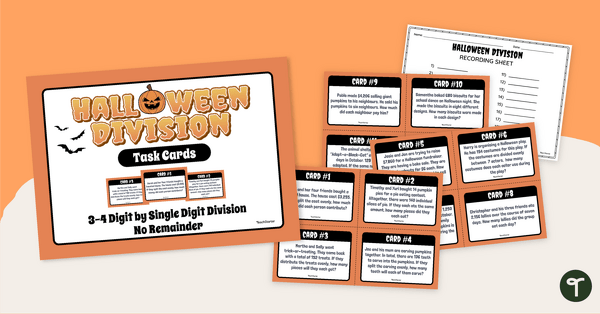
Halloween Themed Division Word Problems - Task Cards
Use various strategies to solve division word problems with a set of Halloween Task Cards.
- Plus Plan
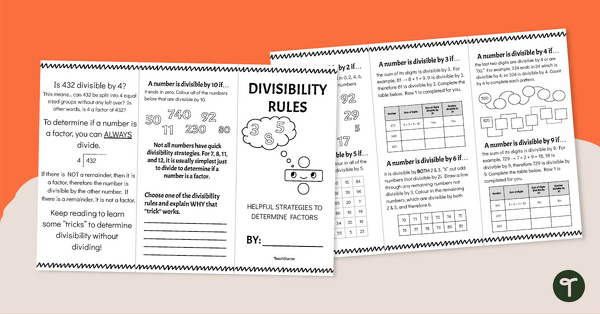
Divisibility Rules Brochure Template
Learn and apply the rules of divisibility by completing this maths brochure template.
- Plus Plan
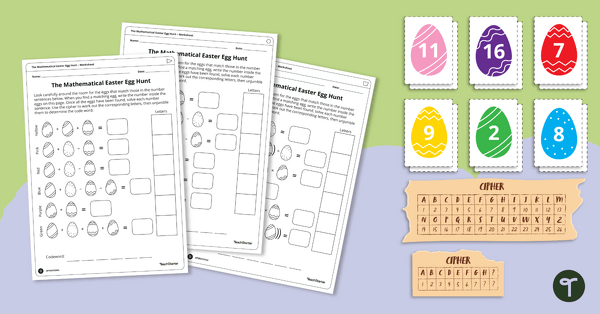
The Mathematical Easter Egg Hunt – Whole Class Game
A differentiated whole class Easter egg hunt.
- Plus Plan

Valentine-Themed Mystery Picture - Division Facts
Have fun with your Valentine’s Day Maths lessons with a division colour by number worksheet!
- Plus Plan
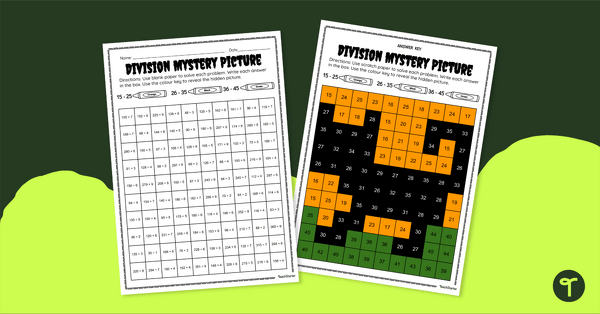
Halloween Division Mystery Picture - Multi-Digit
Have a bit of Halloween maths fun with a division colour by number worksheet.
- Plus Plan
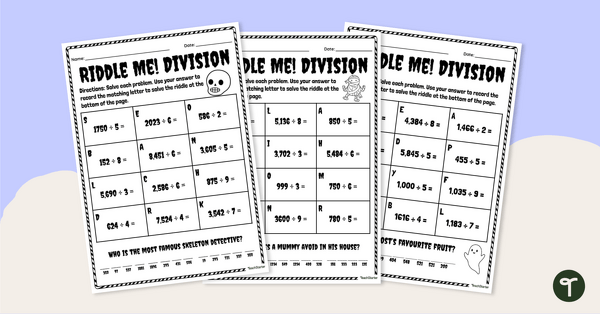
Halloween Themed Division Riddles - Worksheet
Have a bit of division fun with our riddle-based Halloween sheets!
- Plus Plan
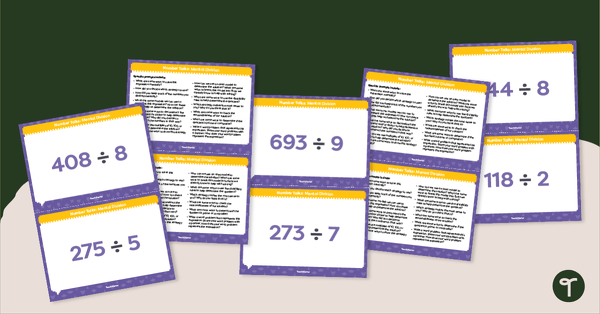
Number Talks - Mental Division Task Cards
Build number sense skills with this set of 24 task cards.
- Plus Plan
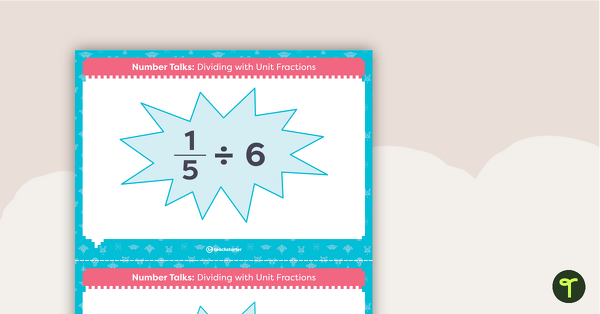
Number Talks - Dividing with Unit Fractions Task Cards
Build fractional reasoning with this set of 24 task cards.
- Plus Plan
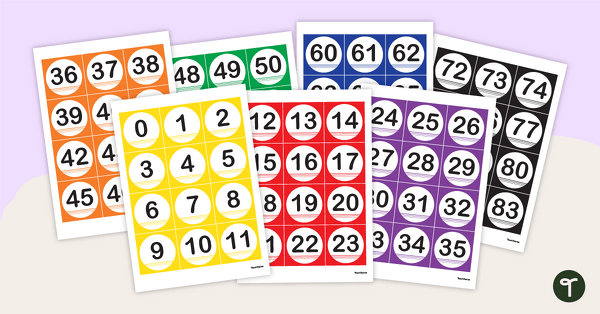
Numbers and Symbols Mini Flashcards
Print a set of colourful number and symbol cards for various maths lessons.
- Plus Plan

Number Talks - Making Ten Task Cards
Build number sense skills with this set of 20 task cards.
- Plus Plan
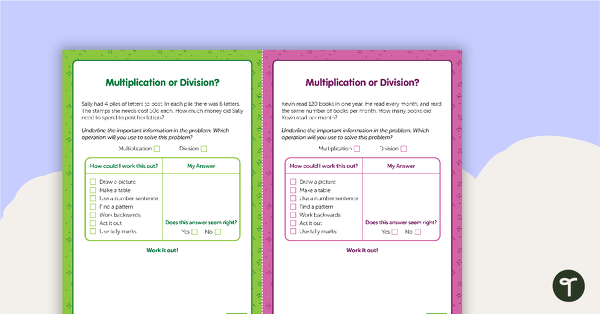
Multiplication or Division? Working Cards
20 multiplication and division problem solving cards.
- Plus Plan

Hundreds Board Mystery Picture Division Task Cards
A set of 32 activity task cards that require students to complete division problems and colour in a hundreds chart to reveal a mystery picture.
- Plus Plan
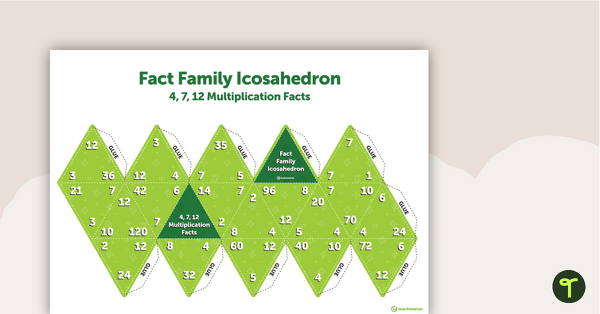
Fact Family Icosahedron (4, 7, 12 Multiplication and Division Facts)
A hands-on game to play when learning about multiplication and division fact families.
- Plus Plan

Fact Family Icosahedron (2, 5, 10 Multiplication and Division Facts)
A hands-on game to play when learning about multiplication and division fact families.
- Plus Plan
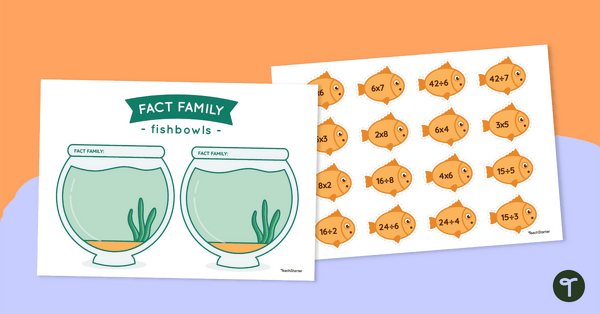
Fact Family Fishbowls
A sorting activity to demonstrate an understanding of multiplication and division fact families.
- Plus Plan
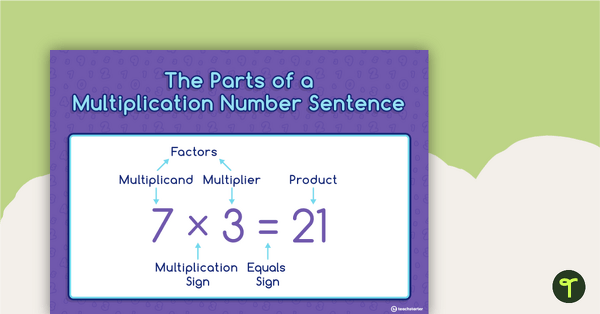
Parts of a Number Sentence (Multiplication and Division) Posters
Four posters to display in the classroom explaining the elements of multiplication and division number sentences.
- Plus Plan
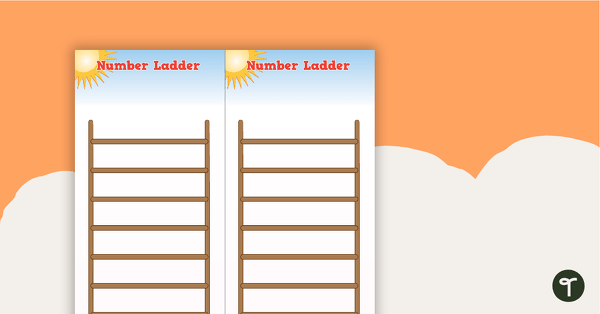
Number Ladders
Blank number ladders with space for sums.
- Plus Plan
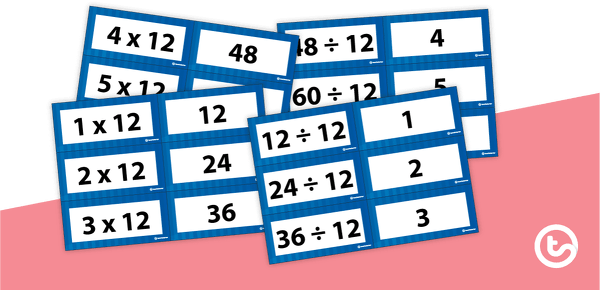
Multiplication and Division Facts Flashcards - Multiples of 12
A set of multiplication and division facts flashcards for multiples of 12.
- Plus Plan
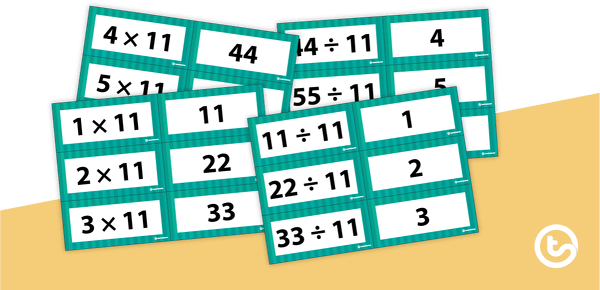
Multiplication and Division Facts Flashcards - Multiples of 11
A set of multiplication and division facts flashcards for multiples of 11.
- Plus Plan
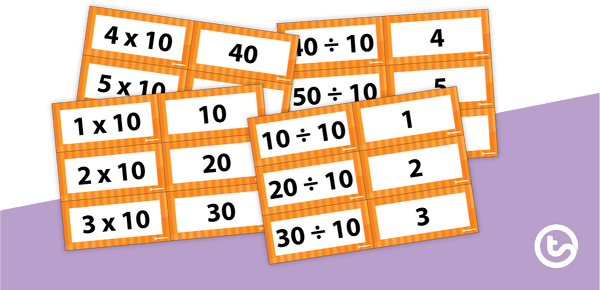
Multiplication and Division Facts Flashcards - Multiples of 10
A set of multiplication and division facts flashcards for multiples of 10.
- Plus Plan
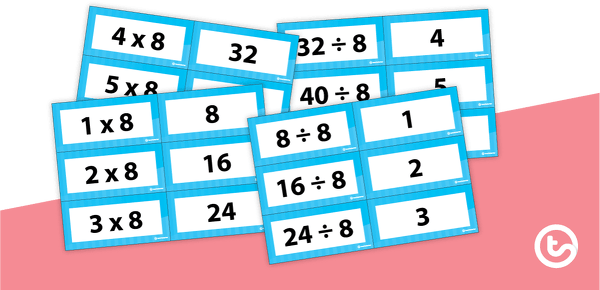
Multiplication and Division Facts Flashcards - Multiples of 8
A set of multiplication and division facts flashcards for multiples of 8.
- Plus Plan
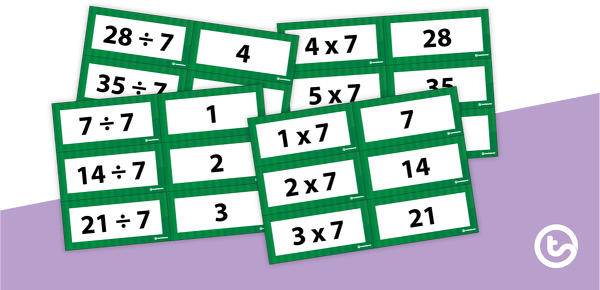
Multiplication and Division Facts Flashcards - Multiples of 7
A set of multiplication and division facts flashcards for multiples of 7.
- Plus Plan
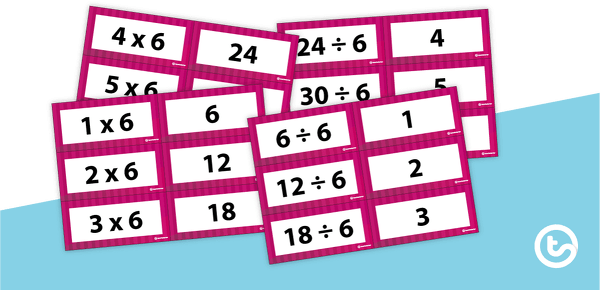
Multiplication and Division Facts Flashcards - Multiples of 6
A set of multiplication and division facts flashcards for multiples of 6.
- Plus Plan
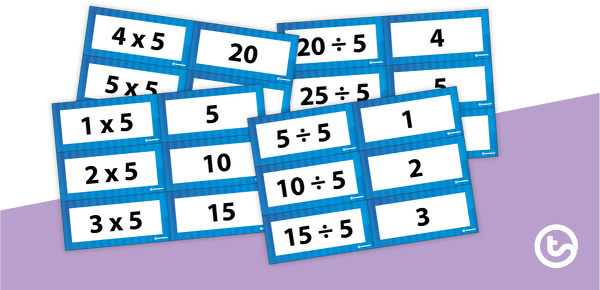
Multiplication and Division Facts Flashcards - Multiples of 5
A set of multiplication and division facts flashcards for multiples of 5.
- Plus Plan
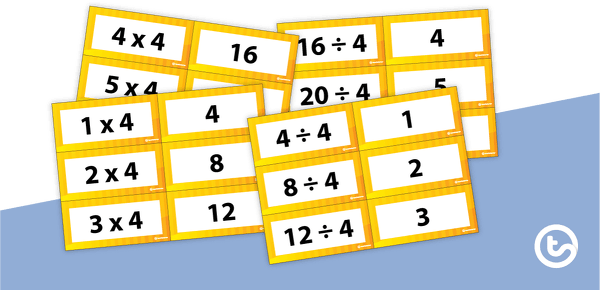
Multiplication and Division Facts Flashcards - Multiples of 4
A set of multiplication and division facts flashcards for multiples of 4.
- Plus Plan
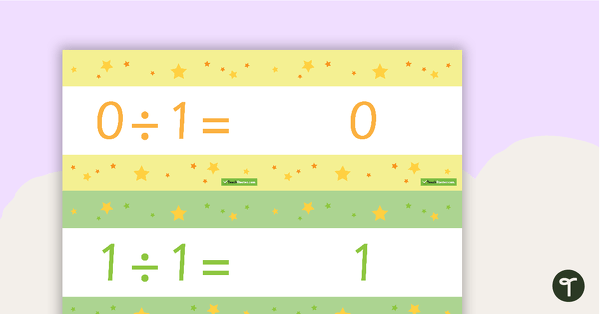
0 - 12 Division Flashcards - Stars
Flashcards with 0-12 division.
- Plus Plan
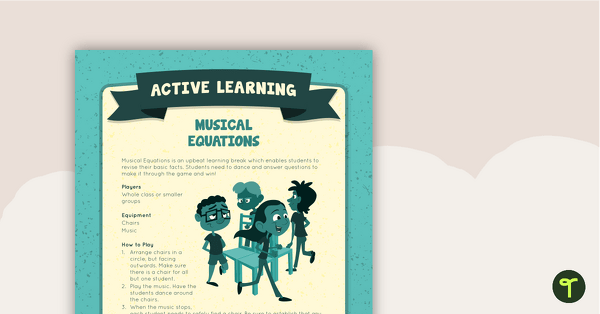
Musical Equations Active Learning
A whole class active game that encourages learning through a physical setting.
- Plus Plan
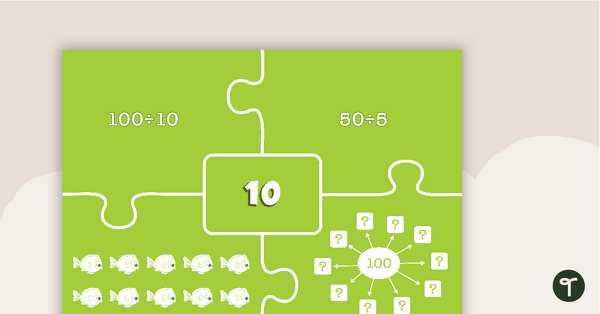
Number Matching Puzzle - Division
A hands-on game to play when learning about dividing numbers.
- Plus Plan
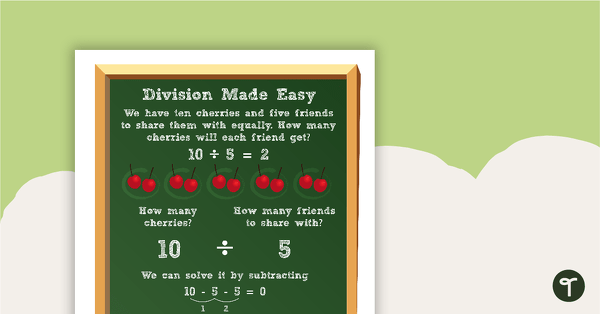
Division Made Easy Poster
Division broken down using the subtraction strategy.
- Plus Plan
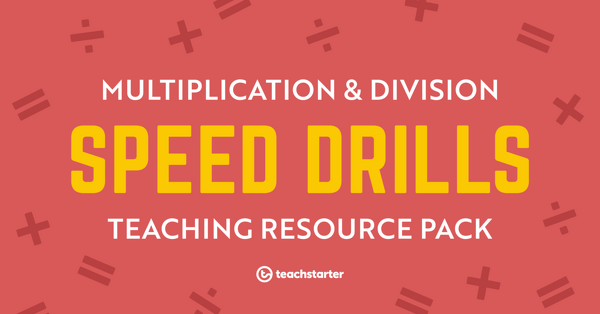
Multiplication and Division Speed Drill Worksheets Bundle
Get a multiplication worksheets bundle with 12 separate activities to help students develop fast and accurate recall of the multiplication tables.
- Plus Plan
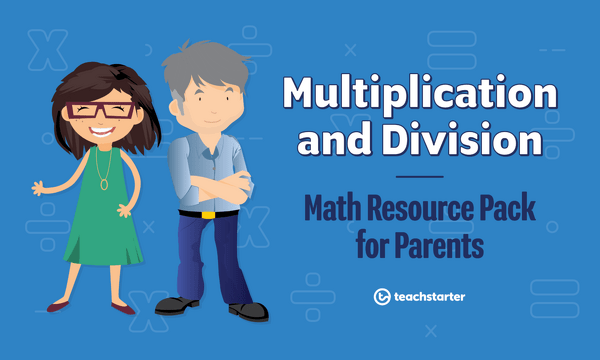
Maths Resource Pack for Parents - Multiplication and Division
A comprehensive resource pack for parents to help Year 3 and Year 4 children with multiplication and division.
- Plus Plan

Colour by Numbers - Multiplication and Division Teaching Resource Pack
A set of engaging colour by number worksheets to consolidate your students’ understanding of multiplication and division facts.